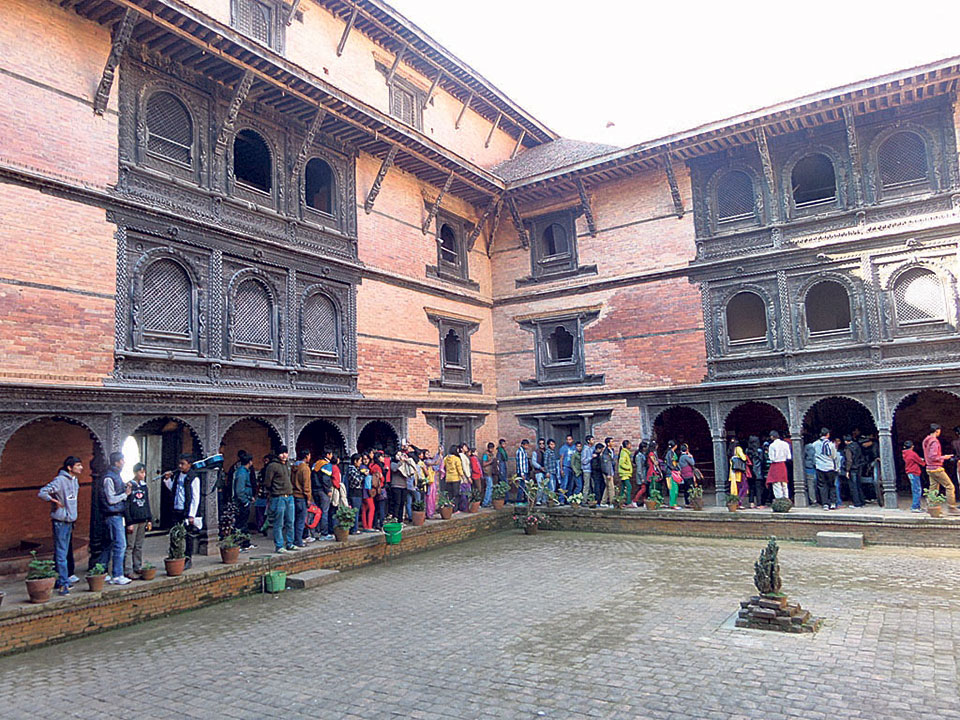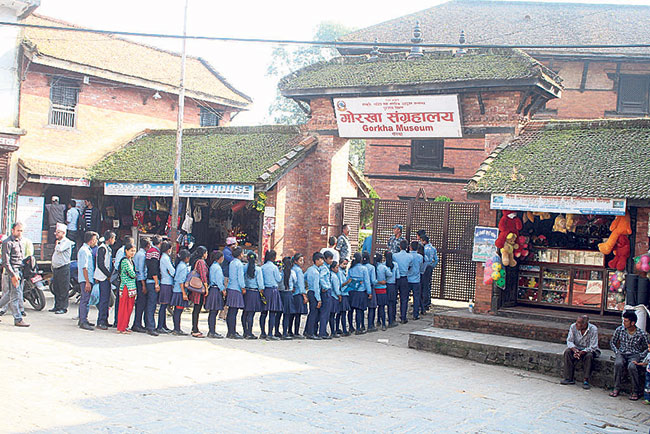Throngs of customers at Gorkha Bazaar
6 years ago

6 years ago

6 years ago

6 years ago

Nestled in the lap of Himalayas, Nepal’s Gorkha district extends to Tibet on the north. You can reach the district headquarters within five hours by bus from Kathmandu, although it takes days to reach the remote northern parts. The headquarters, Gorkha bazaar, is 24 kilometers away from Abu Khaireni along Kathmandu-Pokhara highway. Your real journey to the place begins when you get off the bus and start enjoying the richness of the surroundings.
Gorkha used to be the kingdom of Prithvi Narayan Shah, the unifier of present day Nepal. Gorkha museum, which is near the bus park, is a perfect place for people who want to learn about the history of the place. The museum is located at the lower palace of King Prithvi from where he expanded his kingdom. Vehicles can reach up to the gate of the museum.
Nepali citizens should pay Rs 25 in entrance fee, which is subsidized at Rs 10 for students. Visitors are allowed to use their mobile cameras but for other cameras they need to pay Rs 50.
The main attraction of this museum is the beautiful artwork. There are two traditional cannons used by King Prithvi on either side of the main entrance. People bustle to take photos in front of the cannons. Dummies representing the cultures of different castes such as Gurung, Kumal, Bhujel, Kaami, and others are placed right inside.
Things that were used in the king’s unification drive are placed from the second floor upwards. Souvenirs and inscription of old Nepal can be observed in this place. The second floor is full of historical things, which gives you a feeling of King Prithvi’s presence. By looking at the pictures placed here, you can visualize the king’s works.
Traditional weapons used by our ancestors during war such as cannon, spear, gun, and many more are showcased on the third floor. The fourth floor of the museum contains coins used by King Prithvi, which are completely different from the modern coins. There are coins made of copper and gold, ranging from five paisa to one rupee in value. The king used these coins to buy weapon from foreign countries.
Different utensils are placed in the fifth floor of the museum. The last room contains different musical instruments like madal, dholak, narsingha, and many more. These instruments were used by King Prithvi and his ancestors during festivals.
The entire museum can be observed within an hour. Museum staffers keep an eye on the visitors all the time. If you do anything that is not allowed, you will be fined.
When you descend from the museum, you enter into a big garden. There are some historic resting places in the garden. Visitors can enjoy dry food in the garden.
Gorakhkali and Gorakhnath temples can be seen from the museum. The temples are being reconstructed at the moment. The Gorakhnath Temple was destroyed in the earthquake of 2015. Though the temple is under construction, devotees still visit there to worship and sacrifice animals.
Visitors go to visit Gorakhkali Temple after visiting the museum. The temple is at 40 minutes’ walk from the museum. People who cannot walk can go to the temple by bus as well. Entrance to the temple is free but camera user should pay Rs 50. Inside the premises of Gorakhkali Durbar, there are smaller temples of deities such as Ganesh, Durga Bhawani, and so on.
There are more than 30 hotels in the district headquarters. Around two kilometers from the bus park of Gorkha, there is a children’s park. Tourists can enjoy magnificent view of the mountains from this area. About a kilometer away from this place, there is Paschim Kali Temple, which is also a popular pilgrimage site for devotees.


Leave A Comment